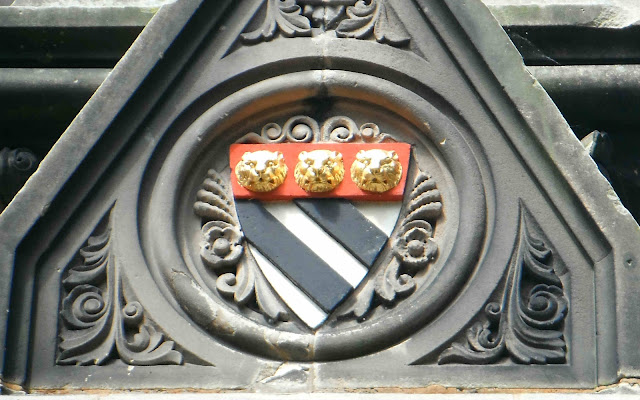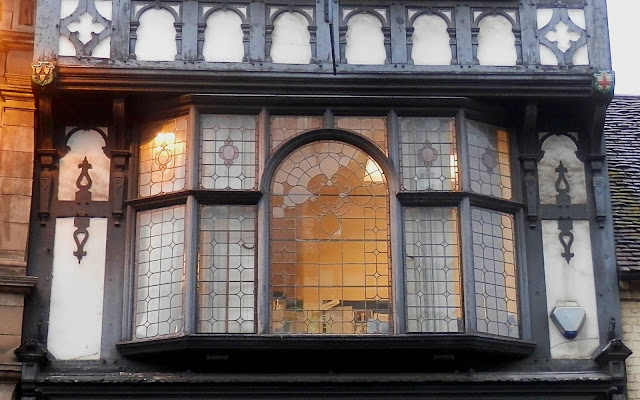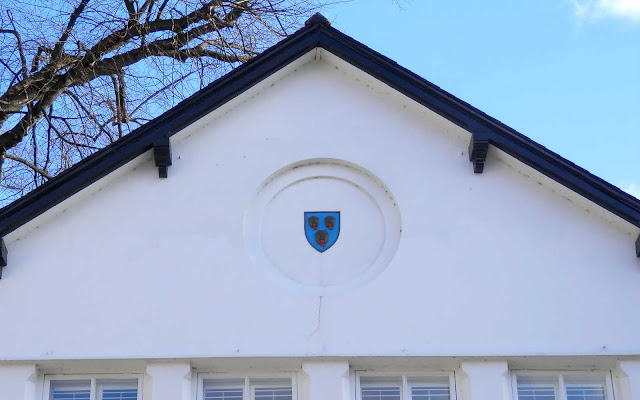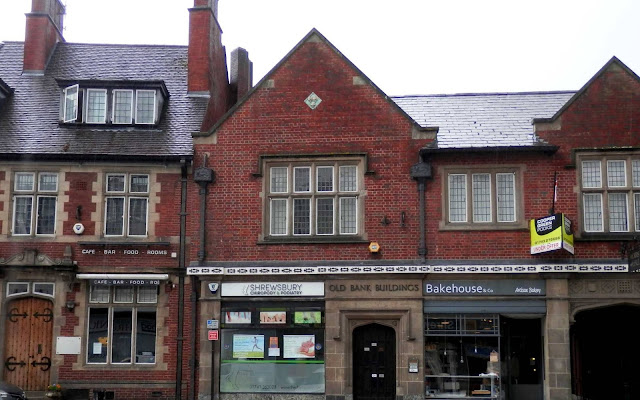The monument to William James Clement, the radical Shrewsbury politician, show three shields of arms on it – those of the borough of Shrewsbury, those the Royal (Shrewsbury) Grammar School and those – presumably – of William Clement himself (see photo above).
He was a ‘commoner’ so he must have applied for the set of arms, and chosen the elements within it... and he chose loggerheads – the icon of his home town.
Clement served on the town council for over 30 years,
getting involved in fine tussles with the dominant Tory group, and also did
a stint as an MP for the town.
Did he choose the loggerheads for
his device as a sign of his native credentials, to spite his Tory
opponents? Well… maybe, who knows?
In fact, are these definitely his arms?
You can find the monument just by
Greyfriars Bridge (north side). There is also a portrait of him in the
town art gallery, though it is not always on show.
+
To comment on this post, just use the Comments field down this page or email us direct.
To
get an email alert into your inbox every time we make a new post (about
once a week), just click 'Subscribe & Follow'
(at the top of the column to the right on this page) and just fill in the form














